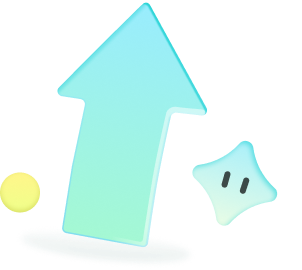Great Lakes Center for Fresh Waters and Human Health
五大湖淡水和人类健康中心
基本信息
- 批准号:2418066
- 负责人:
- 金额:$ 385.65万
- 依托单位:
- 依托单位国家:美国
- 项目类别:Continuing Grant
- 财政年份:2024
- 资助国家:美国
- 起止时间:2024-04-15 至 2029-03-31
- 项目状态:未结题
- 来源:
- 关键词:
项目摘要
The Great Lakes Center for Fresh Waters and Human Health is a consortium of over 10 universities and agencies working in the Great Lakes region and directed by the University of Michigan and University of Toledo. The Center is a five year effort to further our understanding of the critical risk that climate change, and resulting cyanobacterial harmful algal blooms (cHABs), pose to freshwater ecosystems and human health. Increased precipitation, more powerful storm events, and warming waters all encourage the proliferation of cHABs, which now occur in all five Great Lakes. The Center is organized around several overarching themes. The first is to resolve how climate change influences the occurrence of cHABs and the transport of the toxins they produce. The second is to understand toxin production and how toxins impact health, through both airborne and waterborne exposure. The third is to develop new technologies for enhanced monitoring and forecasting. In collaboration with agency and community partners the team will integrate findings into state-of-the-art forecasts and other data products that reach a wide stakeholder audience. A Community Engagement Core (CEC) will connect Center science to relevant communities, promoting co-design of research and communication of research outcomes to stakeholders. The team will leverage the Center’s research enterprise to recruit and train a diverse next generation of scientists in the field of oceans and human health, including support for graduate students and postdocs. The Center will advance inclusivity in all facets of research and engagement. Together, these research, engagement, and training activities will advance progress toward the stated goals of understanding and translating climate change effects on cHAB events and their threats to human health in the Great Lakes region. The Center is jointly supported by NSF’s Division of Ocean Sciences and by the National Institute for Environmental Health Sciences (NIEHS).The Center’s research is organized around four distinct but highly integrated projects. Project 1 seeks to determine how a changing climate influences the proliferation and toxin production of cHAB taxa. This project will use a multipronged field-lab experimental approach to test the hypothesis that climate-driven episodic events (e.g., storms) affect several classes of cyanotoxins (microcystins, anatoxins, saxitoxins, and anabaenopeptins), taste and odor compounds, and phycosphere interactions. Project 2 seeks to reveal the diversity, spatial and temporal distribution, and bioactivity of known and undiscovered toxins and other secondary metabolites. This project will use a combination of approaches (including metagenomics, transcriptomics, and metabolomics) to characterize the diversity of emerging toxins and bioactive compounds currently invisible to methods used in routine water quality analysis. Project 3 will study toxin release from cHAB cells, aerosolization, and transport to test the hypothesis that climate change will increase human exposure to cHAB toxins through ingestion and inhalation. A combined measurement and modeling approach will be used to evaluate the impact of climate-change driven stressors on the distribution of dissolved and particulate toxins in both water bodies and aerosols generated from cHABs, enabling predictions of toxin exposure under a changing climate. Project 4 will assess the effects of aerosolized toxins on human health with a special focus on populations that are vulnerable due to pre-existing conditions, such as asthma. Project 4 will test the overall hypothesis that exposure to aerosolized cyanotoxins induces significant inflammation in the airway epithelium and that individuals with asthma are particularly susceptible to cHAB aerosols. Combined with the results of the other three projects, this work will enable assessment of human health risks of cHAB toxins under current conditions and future climate scenarios. In summary, the Great Lakes Center for Fresh Waters and Human Health aims to understand and communicate the risks of cHABs in the face of climate change through collaborative research, engagement efforts, and training initiatives.This award reflects NSF's statutory mission and has been deemed worthy of support through evaluation using the Foundation's intellectual merit and broader impacts review criteria.
大湖新鲜水域和人类健康中心是在大湖地区工作的10多家大学和机构的财团,由密歇根大学和托莱多大学指导。该中心是为期五年的努力,以进一步了解气候变化的关键风险,以及由此产生的蓝细菌有害藻类血液(CHAB),对淡水生态系统和人类健康构成姿势。增加降水量,更强大的暴风雨事件以及变暖的水都鼓励了CHAB的扩散,这是所有五个大湖泊中发生的。该中心围绕几个总体主题组织。首先是解决气候变化如何影响CHAB的发生及其产生的毒素的运输。第二个是通过空降和水上暴露来了解毒素的产生以及毒素如何影响健康。第三个是开发新技术来增强监测和预测。与代理机构和社区合作伙伴合作,团队将将发现集成到最先进的森林和其他数据产品中,以吸引广泛的利益相关受众。社区参与核心(CEC)将将中心科学与相关社区联系起来,从而促进研究成果的研究和沟通与利益相关者的共同设计。该团队将利用该中心的研究企业在海洋和人类健康领域招募和培训潜水员的下一代科学家,包括支持研究生和博士后。该中心将在研究和参与方面提高包容性。这些研究,参与和培训活动共同将朝着理解和翻译气候变化对CHAB事件的影响及其对大湖地区人类健康的威胁的既定目标发展。该中心由NSF海洋科学部和美国国家环境健康科学研究所(NIEHS)共同支持。该中心的研究围绕四个截然不同但高度集成的项目组织。项目1试图确定气候变化如何影响CHAB分类单元的增殖和毒素产生。该项目将使用多管野外实验性实验方法来检验以下假设:气候驱动的情节事件(例如,风暴)会影响几类的氰毒素(微囊蛋白毒素,解剖毒素,saxitoxins和nabaenopeptins),口味和ODOR化合物和菲斯环相互作用。项目2旨在揭示已知和未发现的毒素和其他次级代谢产物的多样性,空间和临时分布以及生物活性。该项目将使用多种方法(包括宏基因组学,转录组学和代谢组学)来表征新兴毒素的多样性以及当前对常规水质分析中使用的方法不可见的生物活性化合物。项目3将研究从CHAB细胞,雾化和运输中释放毒素,以检验以下假设:气候变化将通过摄入和吸入增加人类对CHAB毒素的暴露。合并的测量和建模方法将用于评估气候变化驱动的压力源对在水体和CHAB产生的气溶胶中溶解和特定毒素分布的影响,从而在不断变化的气候下对毒素暴露的预测进行了预测。项目4将评估雾化毒素对人类健康的影响,特别关注因疾病(例如哮喘)而易受伤害的人群。项目4将检验总体假设,即暴露于气溶的氰毒素会影响气道上皮的显着感染,并且患有哮喘的个体特别容易受到CHAB气溶胶的影响。结合其他三个项目的结果,这项工作将在当前条件和未来的气候情况下评估CHAB毒素的人类健康风险。总而言之,大湖新鲜水域和人类健康中心旨在通过协作研究,参与工作和培训计划在气候变化时了解和传达CHAB的风险。该奖项反映了NSF的法定任务,并通过评估该基金会的智力优点和广泛的影响来评估NSF的法定任务,并被认为是值得的。
项目成果
期刊论文数量(0)
专著数量(0)
科研奖励数量(0)
会议论文数量(0)
专利数量(0)
数据更新时间:{{ journalArticles.updateTime }}
{{
item.title }}
{{ item.translation_title }}
- DOI:
{{ item.doi }} - 发表时间:
{{ item.publish_year }} - 期刊:
- 影响因子:{{ item.factor }}
- 作者:
{{ item.authors }} - 通讯作者:
{{ item.author }}
数据更新时间:{{ journalArticles.updateTime }}
{{ item.title }}
- 作者:
{{ item.author }}
数据更新时间:{{ monograph.updateTime }}
{{ item.title }}
- 作者:
{{ item.author }}
数据更新时间:{{ sciAawards.updateTime }}
{{ item.title }}
- 作者:
{{ item.author }}
数据更新时间:{{ conferencePapers.updateTime }}
{{ item.title }}
- 作者:
{{ item.author }}
数据更新时间:{{ patent.updateTime }}
Gregory Dick其他文献
Intestinal Geographical Pattern of Gut Microbiome and Metabolites Identifies Novel Regulators of Graft-Versus-Host Disease
- DOI:
10.1182/blood-2023-191108 - 发表时间:
2023-11-02 - 期刊:
- 影响因子:
- 作者:
Emma Lauder;Anders Kiledal;Dongchang Zhao;Gregory Dick;Pavan Reddy - 通讯作者:
Pavan Reddy
Rational Modification of Human Gut Microbiome and Metabolites By Dietary Resistant Starch in Allogeneic Hematopoietic Stem Cell Transplantation: A Feasibility Study
- DOI:
10.1182/blood-2023-181260 - 发表时间:
2023-11-02 - 期刊:
- 影响因子:
- 作者:
Mary Mansour Riwes;Jonathan Louis Golob;John M. Magenau;Costas Lyssiotis;Mengrou Shan;Gregory Dick;Thomas Braun;Thomas M Schmidt;Attaphol Pawarode;Sarah Anand;Monalisa Ghosh;John Maciejewski;Darren King;Sung W. Choi;Gregory Yanik;Marcus Johannes Geer;Ethan Hillman;Muneesh Tewari;Pavan Reddy - 通讯作者:
Pavan Reddy
Gregory Dick的其他文献
{{
item.title }}
{{ item.translation_title }}
- DOI:
{{ item.doi }} - 发表时间:
{{ item.publish_year }} - 期刊:
- 影响因子:{{ item.factor }}
- 作者:
{{ item.authors }} - 通讯作者:
{{ item.author }}
{{ truncateString('Gregory Dick', 18)}}的其他基金
The role of heterotrophic bacteria in protecting cyanobacteria from hydrogen peroxide in coastal systems.
异养细菌在保护蓝藻免受沿海系统过氧化氢侵害中的作用。
- 批准号:
1736629 - 财政年份:2018
- 资助金额:
$ 385.65万 - 项目类别:
Standard Grant
Collaborative Research: Revealing the interplay between light, sulfur cycling, and oxygen production in cyanobacterial mats
合作研究:揭示蓝藻垫中光、硫循环和氧气产生之间的相互作用
- 批准号:
1637066 - 财政年份:2016
- 资助金额:
$ 385.65万 - 项目类别:
Standard Grant
GP-IMPACT: Broadening pathways to geosciences with an integrated program at The University of Michigan
GP-IMPACT:通过密歇根大学的综合项目拓宽地球科学的途径
- 批准号:
1540589 - 财政年份:2015
- 资助金额:
$ 385.65万 - 项目类别:
Standard Grant
Collaborative Research: An Autonomous Vertical Sampling Vehicle for Global Ocean Biogeochemical Mapping
合作研究:用于全球海洋生物地球化学测绘的自主垂直采样车
- 批准号:
1334727 - 财政年份:2013
- 资助金额:
$ 385.65万 - 项目类别:
Standard Grant
Collaborative Research: EAGER: Genomic insights into microbial mat diveristy and Proterozoic geobiology
合作研究:EAGER:微生物垫多样性和元古代地球生物学的基因组见解
- 批准号:
1035955 - 财政年份:2011
- 资助金额:
$ 385.65万 - 项目类别:
Standard Grant
Linking biogeochemistry and microbial community dynamics in deep-sea hydrothermal plumes
将深海热液羽流中的生物地球化学和微生物群落动态联系起来
- 批准号:
1029242 - 财政年份:2010
- 资助金额:
$ 385.65万 - 项目类别:
Standard Grant
Collaborative Reserach: Integrating geochemistry, microbiology, and hydrodynamics: A model for trace element transport and fate in hydrothermal plumes
合作研究:整合地球化学、微生物学和流体动力学:热液羽流中微量元素迁移和命运的模型
- 批准号:
1038006 - 财政年份:2010
- 资助金额:
$ 385.65万 - 项目类别:
Standard Grant
相似国自然基金
基于古环境DNA的色林错全新世湖泊生态系统变化重建研究
- 批准号:42371170
- 批准年份:2023
- 资助金额:51 万元
- 项目类别:面上项目
基于光谱示踪的湖泊水体有机碳组分遥感协同反演机理及算法研究
- 批准号:42371371
- 批准年份:2023
- 资助金额:46 万元
- 项目类别:面上项目
白垩纪OAE1a时期湖泊微生物甲烷代谢过程及其环境效应
- 批准号:42302345
- 批准年份:2023
- 资助金额:30 万元
- 项目类别:青年科学基金项目
限域效应强化MXene-Fe@PES消减湖泊水体多环芳烃的过程与机理
- 批准号:52300224
- 批准年份:2023
- 资助金额:30 万元
- 项目类别:青年科学基金项目
浅水富营养化湖泊浮游藻类对底泥疏浚的响应过程模拟与机制解析
- 批准号:42371116
- 批准年份:2023
- 资助金额:49 万元
- 项目类别:面上项目
相似海外基金
Great Lakes Clinical Center of the Acute Respiratory Distress Syndrome, Pneumonia and Sepsis (APS) Consortium
急性呼吸窘迫综合征、肺炎和败血症 (APS) 联盟五大湖临床中心
- 批准号:
10646578 - 财政年份:2023
- 资助金额:
$ 385.65万 - 项目类别:
Center for Leadership in Environmental Awareness and Research
环境意识和研究领导力中心
- 批准号:
10352961 - 财政年份:2022
- 资助金额:
$ 385.65万 - 项目类别:
Great Lakes Center for Farmworker Health and Well-being
五大湖农场工人健康与福祉中心
- 批准号:
10693986 - 财政年份:2022
- 资助金额:
$ 385.65万 - 项目类别:
Great Lakes NARCH - Expanding Community Partnerships
五大湖 NARCH - 扩大社区合作伙伴关系
- 批准号:
10706474 - 财政年份:2022
- 资助金额:
$ 385.65万 - 项目类别:
Great Lakes NARCH - Expanding Community Partnerships
五大湖 NARCH - 扩大社区合作伙伴关系
- 批准号:
10438021 - 财政年份:2022
- 资助金额:
$ 385.65万 - 项目类别:




















